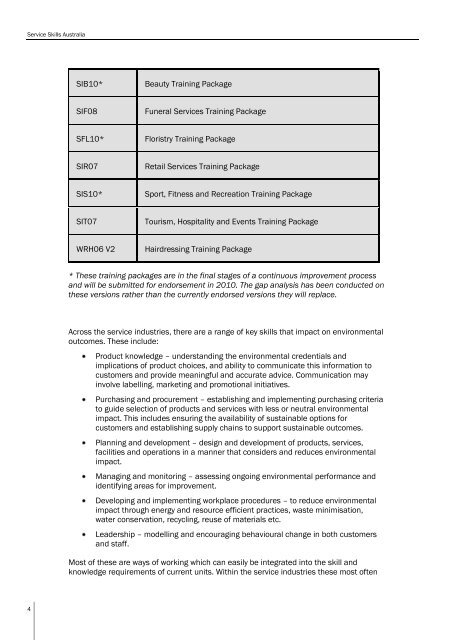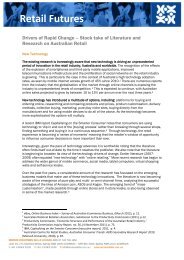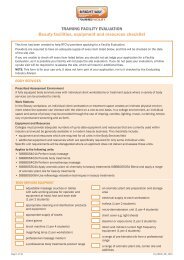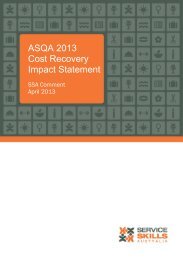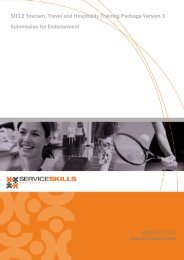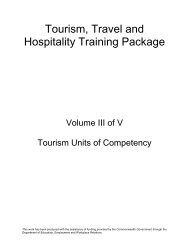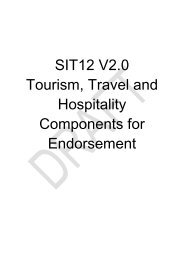Sustainability Skills Stocktake and Gap Analysis ... - Service Skills
Sustainability Skills Stocktake and Gap Analysis ... - Service Skills
Sustainability Skills Stocktake and Gap Analysis ... - Service Skills
You also want an ePaper? Increase the reach of your titles
YUMPU automatically turns print PDFs into web optimized ePapers that Google loves.
<strong>Service</strong> <strong>Skills</strong> Australia<br />
SIB10*<br />
Beauty Training Package<br />
SIF08<br />
Funeral <strong>Service</strong>s Training Package<br />
SFL10*<br />
Floristry Training Package<br />
SIR07<br />
Retail <strong>Service</strong>s Training Package<br />
SIS10*<br />
Sport, Fitness <strong>and</strong> Recreation Training Package<br />
SIT07<br />
Tourism, Hospitality <strong>and</strong> Events Training Package<br />
WRH06 V2<br />
Hairdressing Training Package<br />
* These training packages are in the final stages of a continuous improvement process<br />
<strong>and</strong> will be submitted for endorsement in 2010. The gap analysis has been conducted on<br />
these versions rather than the currently endorsed versions they will replace.<br />
Across the service industries, there are a range of key skills that impact on environmental<br />
outcomes. These include:<br />
Product knowledge – underst<strong>and</strong>ing the environmental credentials <strong>and</strong><br />
implications of product choices, <strong>and</strong> ability to communicate this information to<br />
customers <strong>and</strong> provide meaningful <strong>and</strong> accurate advice. Communication may<br />
involve labelling, marketing <strong>and</strong> promotional initiatives.<br />
Purchasing <strong>and</strong> procurement – establishing <strong>and</strong> implementing purchasing criteria<br />
to guide selection of products <strong>and</strong> services with less or neutral environmental<br />
impact. This includes ensuring the availability of sustainable options for<br />
customers <strong>and</strong> establishing supply chains to support sustainable outcomes.<br />
Planning <strong>and</strong> development – design <strong>and</strong> development of products, services,<br />
facilities <strong>and</strong> operations in a manner that considers <strong>and</strong> reduces environmental<br />
impact.<br />
Managing <strong>and</strong> monitoring – assessing ongoing environmental performance <strong>and</strong><br />
identifying areas for improvement.<br />
Developing <strong>and</strong> implementing workplace procedures – to reduce environmental<br />
impact through energy <strong>and</strong> resource efficient practices, waste minimisation,<br />
water conservation, recycling, reuse of materials etc.<br />
Leadership – modelling <strong>and</strong> encouraging behavioural change in both customers<br />
<strong>and</strong> staff.<br />
Most of these are ways of working which can easily be integrated into the skill <strong>and</strong><br />
knowledge requirements of current units. Within the service industries these most often<br />
4


